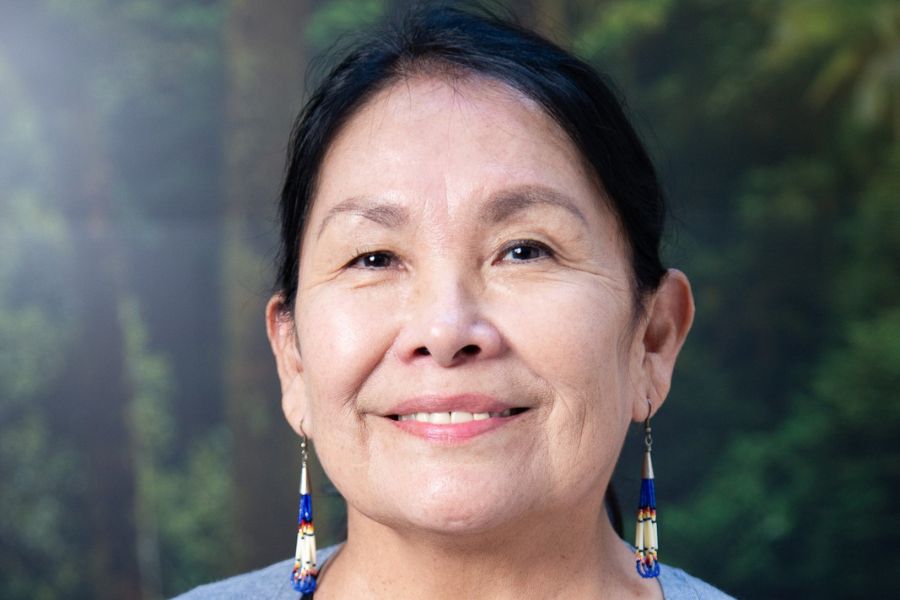Until the federal government spends more on healthcare for Native Americans, they will not reach parity with the rest of the nation, according to Trula Ann Breuninger.
Breuninger, who earned her MPH from UC Berkeley School of Public Health in 1991, has spent more than 20 years in the healthcare and social services industries, working with private enterprises and tribal governments in Arizona, California, Massachusetts, New Mexico, and Oregon.
In June, she became CEO of Native American Connections, a Native American–operated nonprofit organization, which works to improve the lives of individuals and families through culturally appropriate health, affordable housing, and community development services. She oversees a staff of 200.
We spoke to Brueninger in October. The conversation has been edited for clarity.
Berkeley Public Health: What is the current state of health—and healthcare—for Native Americans?
Breuninger: It’s very complex. Over time if you look at outcomes for Native Americans, mortality rates have improved. Vaccination coverage among American Indian children is higher than national levels for most vaccines. But if you look at all the statistics and outcomes, it’s still bad. Maternal health has improved over time, but there’s a huge disparity in access to health [care services], that is related to funding. The government is not funding healthcare facilities at the levels we should get, based on need.
BPH: What are the greatest health care problems in Native American communities right now?
In every population, addiction is a huge problem. I would say behavioral health, mental health, substance abuse services, need to be funded at higher levels, and this is not just in communities of color. Organizations like NAC fight to address these issues, including opioid addiction. It’s unconscionable that the overprescribing of opioids is still occurring.
BPH: Where, specifically, is the health system for Native Americans underfunded?
The entire health care system that serves Native Americans: Indian Health Service, Tribal Health programs, and Urban Indian Health programs.
The federal government does not cover the needs and address the disparties. The healthcare systems are underfunded, even though the federal government is responsible for providing healthcare for all Native Americans.
BPH: How are you working to change that?
We, individuals, tribal governments, and national Native American advocacy groups advocate at the congressional level all the time. Of course, a Democratic congress is always better, but that doesn’t mean it will still fulfill the healthcare needs.
BPH: Who are your champions on Capitol Hill?
Many individuals in political office champion our cause; generally, those who know about Indian health disparities and/or have constituents who are Native American.
BPH: What are your goals as CEO of Native American Connections?
We’re always striving to reach more people and expand our services with a more robust integrated health model. For example, a systematic coordination of primary and behavioral health approach toward caring for people in need.
BPH: What are your biggest challenges?
For anybody who assumes a position of leadership in communities that are underrepresented, you’re constantly advocating for the vulnerable populations you serve. You’re trying to get more resources, a seat at the table, and building partnerships. That seems to be a majority of my job.
NAC is very active in the community; in city, county, state and the regional level. You have to be the voice for your clients, patients, and community.
I believe that people tend to listen because I am Native American representing my community, plus I have years of experience, the background, and education.
BPH What do you recall as most useful about your experience at Berkeley?
When I attended Berkeley, I was fortunate that Dr. Henrik Blum was a visiting teaching professor. There was a level of professors, along with Blum, that understood public health and social determinants of health in rural areas and communities of color. They understood the barriers, disparities, and vulnerabilities of American Indian and Alaskan Natives.
As a Native American, Diné (member of the Navajo Nation), I was eager to learn public health theory and application. I was one of few Native Americans who graduated from the MPH program in 1991 and I used it as a foundation for the work I do today; advocating for vulnerable populations and leading organizations making impactful change in communities.
BPH: What advice do you have for current BPH students?
I would say, take the time there, in school, to be active in any type of forum and discussions available. Begin building and developing your voice. You will use it!
In the business we are in, [working for Native American health], there are few educated professionals with masters or doctorate level degrees, so the Natives who come out of school have a huge responsibility to be that voice, to be that expert.
BPH: You’ve had a long career, with lots of ups and downs. How do you handle the defeats?
I think as you mature, which I have over the years, you experience and learn. I’ve been a mentor to many young people who come into the profession. There can be disappointments because sometimes you’re a lone wolf out there fighting and advocating and sometimes people will say no, but that shouldn’t prevent anyone from trying again. You just have to work harder at it.

